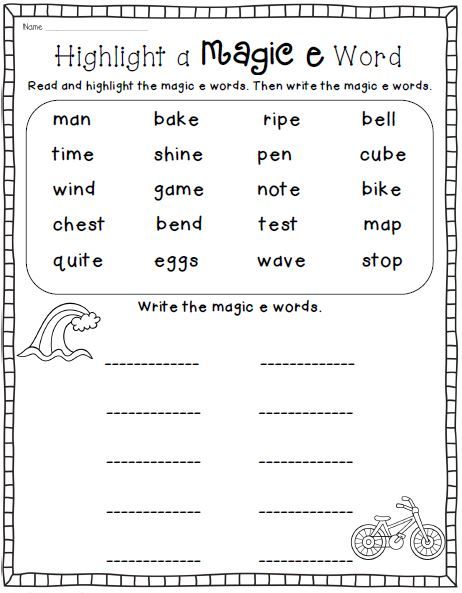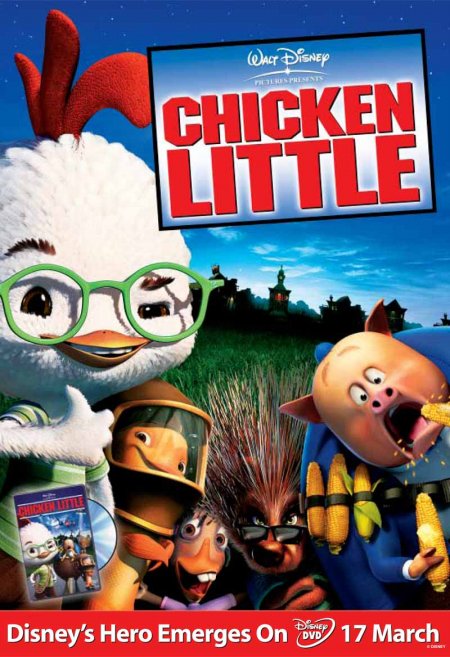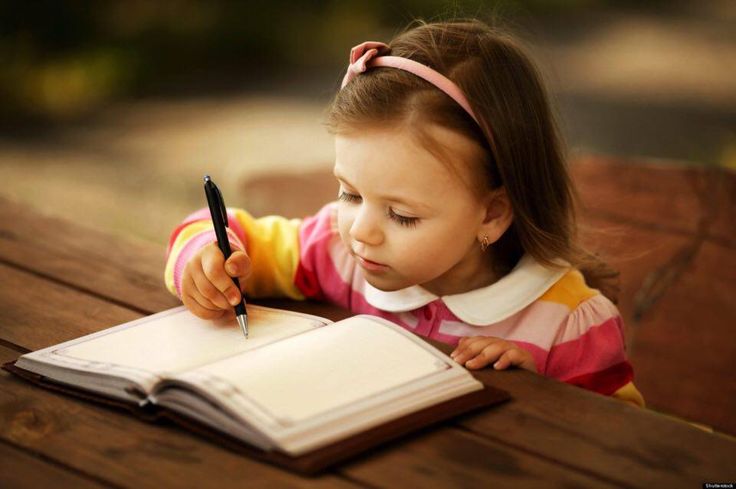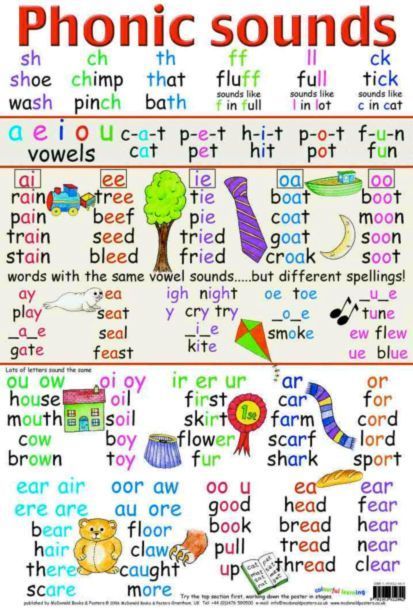First grade learn to read
First grade is critical for reading skills, but some kids are way behind
AUSTIN, Texas — Most years, by the third week of first grade, Heather Miller is working with her class on writing the beginning, middle and end of simple words. This year, she had to backtrack — all the way to the letter “H.”
This story also appeared in USA Today“Do we start at the bottom or do we start at the top?” Miller asked as she stood in front of her class at Doss Elementary.
“Top!” chorused a few voices.
“When I do an H, I do a straight line down, another straight line down and then I cross in the middle,” Miller said, demonstrating on a projector in a front corner of the classroom.
Her 25 students set to work on their own. Some got it right away. One student watched his tablemate before slowly copying down his own H’s. Another tested her own way of writing the letter: one line down, cross in the middle, then another line down. “Your paper is upside down, let’s turn it,” Miller said to a student who was trying to write letters while leaning sideways, almost out of her seat.
In classrooms across the country, the first months of school this fall have laid bare what many in education feared: Students are way behind in skills they should have mastered already.
Children in early elementary school have had their most formative first few years of education disrupted by the pandemic, years when they learn basic math and reading skills and important social-emotional skills, like how to get along with peers and follow routines in a classroom.
While experts say it’s likely these students will catch up in many skills, the stakes are especially high around literacy. Research shows if children are struggling to read at the end of first grade, they are likely to still be struggling as fourth graders. And in many states with third grade reading “gates” in place, students could be at risk of getting held back if they haven’t caught up within a few years.
40 percent — The number of first grade students “well below grade level” in reading in 2020, compared with 27 percent in 2019, according to Amplify Education Inc.

First grade in particular — “the reading year,” as Miller calls it — is pivotal for elementary students, when their literacy skills “really take off.” Kindergarten focuses on easing children from a variety of educational backgrounds — or none at all — into formal schooling. In contrast, first grade concentrates on moving students from pre-reading skills and simple math, like counting, to more complex skills, like reading and writing sentences and adding and subtracting numbers.
By the end of first grade in Texas, students are expected to be able to mentally add or subtract 10 from any given two-digit number, retell stories using key details and write narratives that sequence events. The benchmarks are similar to those used in the more than 40 states that, along with the District of Columbia, adopted the national Common Core standards a decade ago.
Teachers often see a range of literacy skills, and that could be more pronounced this year due to the pandemic
Teacher Heather Miller has seen a wide range of writing skills among her first grade students, with some students already writing complex sentences while others are still working on letter formation. Credit: Jackie Mader/ The Hechinger ReportHeather Miller has already seen improvement in writing, including among students who started the year without a strong grasp of forming letters. Credit: Jackie Mader/ The Hechinger ReportHeather Miller’s students frequently write in notebooks to show their progress in writing skills. Credit: Jackie Mader/ The Hechinger ReportHeather Miller’s students frequently write in notebooks to show their progress in writing skills. Credit: Jackie Mader/ The Hechinger Report
Credit: Jackie Mader/ The Hechinger ReportHeather Miller has already seen improvement in writing, including among students who started the year without a strong grasp of forming letters. Credit: Jackie Mader/ The Hechinger ReportHeather Miller’s students frequently write in notebooks to show their progress in writing skills. Credit: Jackie Mader/ The Hechinger ReportHeather Miller’s students frequently write in notebooks to show their progress in writing skills. Credit: Jackie Mader/ The Hechinger Report“They really grow as readers in first grade, and writers,” Miller said. “It’s where they build their confidence in their fluency.”
But about half of Miller’s class of first graders at Doss Elementary, a spacious, bright, newly built school in northwest Austin, spent kindergarten online. Some were among the tens of thousands of children who sat out kindergarten entirely last year.
More than a month into this school year, Miller found she was spending extensive time on social lessons she used to teach in kindergarten, like sharing and problem-solving. She stopped class repeatedly to mediate disagreements. Finally, she resorted to an activity she used to use in kindergarten: role-playing social scenarios, like what to do if someone accidentally trips you.
She stopped class repeatedly to mediate disagreements. Finally, she resorted to an activity she used to use in kindergarten: role-playing social scenarios, like what to do if someone accidentally trips you.
“My kids are so spread out in their needs … there’s so much to teach, and somehow there’s not enough time.”
Heather Miller, first grade teacher
“So many kids are missing that piece from last year because they were, you know, virtual or on an iPad for most of the time, and they don’t know how to problem-solve with each other,” Miller said. “That’s just caused a lot of disruption during the school day.”
Her students were also not as independent as they had been in previous years. Used to working on tablets or laptops for much of their day, many of these students were also behind in fine motor skills, struggling to use scissors and still working on correctly writing numbers.
Related: What parents need to know about the research on how kids learn to read
Instead of working on first grade standards, Miller was devoting time on this Friday morning in early September to forming upper- and lowercase letters, a kindergarten standard in Texas and the majority of other states. As students finished practicing the letter H, they moved on to the assignment at the bottom of the page: Draw a picture and write a word describing something that starts with an H.
As students finished practicing the letter H, they moved on to the assignment at the bottom of the page: Draw a picture and write a word describing something that starts with an H.
“H-r-o-s” one student wrote next to a picture of a horse standing on green grass in front of a light blue sky. “H-e-a-r-s” another student wrote next to a picture of a strip of brown hair, floating in the white picture box. “You should draw a face there,” suggested his tablemate, pointing at the blank space under the hair.
Students work on a phonics activity during center time in Heather Miller’s classroom. Credit: Jackie Mader/ The Hechinger ReportMiller’s first graders are a case study in the scale, depth and unevenness of learning loss during the pandemic. One report by Amplify Education Inc., which creates curriculum, assessment and intervention products, found children in first and second grade experienced dramatic drops in grade level reading scores compared with those in previous years.
In 2020, 40 percent of first grade students and 35 percent of second grade students were scoring “well below grade level” on a reading assessment, compared with 27 percent and 29 percent the previous year. That means a school would need to offer “intensive intervention” to nearly 50 percent more students than before the pandemic.
That means a school would need to offer “intensive intervention” to nearly 50 percent more students than before the pandemic.
Data analyzed by McKinsey & Company late last year concluded that children have lost at least one and a half months of reading. Other data show low-income, Black and Latinx students are falling further behind than their white peers, leading to worsening achievement gaps.
Experts say it’s now clear families who had time and resources to help their children with academics when schooling was disrupted had a tremendous advantage.
“Higher-income parents, higher-educated parents, are likely to have worked with their children to teach them to read and basic numbers, and some of those really basic early foundational skills that kids generally get in pre-K, kindergarten and first grade,” said Melissa Clearfield, a professor of psychology who focuses on young children and poverty at Whitman College.
“Families who were not able to, either because their parents were essential workers or children whose parents are significantly low-income or not educated, they’re going to be really far behind. ”
”
What Miller has observed in the first few weeks of the school year is likely taking place in classrooms nationwide, experts say. In April, researchers with the nonprofit NWEA, which develops pre-K-12 assessments, predicted how the pandemic’s disruptions would manifest among the kindergarten class of 2021: a wider range of ability levels; large class sizes with more diverse ages because some parents held children back a grade; and students unfamiliar with in-person classroom routines.
“We predicted that there would be a lot of diversity in skills,” said Brooke Mabry, strategic content design coordinator for NWEA Professional Learning. That includes skills related to academics, social-emotional learning and executive functioning, she added.
The varying experiences children had with school last year also impacted fine motor skill development, independence, ability to navigate conflicts and the “unfinished learning” teachers are now observing, she added.
Related: Remote learning a bust? Some families consider having their child repeat kindergarten
While switching to remote learning was hard on many students, younger students were generally unable to log themselves on to a computer independently and focus on virtual lessons for extended periods of time. Teachers, who usually rely on small, in-person groups for early literacy skills, instead had to teach letters, sounds and sight words via online platforms.
Miller had the unwieldy task of teaching kids both in person and online, spending her year pivoting between students in front of her and students on her computer screen, using her projector to display books to students at home and teaching reading skills via virtual groups.
Now, with students in front of her again, Miller was finding that those online lessons weren’t as useful as many had hoped.
Miller, 30, is a calm, confident teacher who is in her eighth year of teaching and her second at Doss. She usually has students with a wide range of ability levels at the beginning of the year, although Doss is relatively affluent. Nearly 62 percent of students at the school are white, and fewer than 20 percent are economically disadvantaged, compared with the district average of nearly 53 percent. In 2019, 95 percent of Doss’ students passed the state reading assessment.
Students play outside Doss Elementary in Austin, Texas. Credit: Jackie Mader/ The Hechinger ReportBut this year, Miller saw larger gaps in reading skills than ever before. Usually, her first graders would start with reading levels ranging from mid-kindergarten to second grade. This year, the levels spanned early kindergarten up to fourth grade.
“My kids are so spread out in their needs,” Miller said. “I just feel like — and I’m sure every teacher feels like this — there’s so much to teach, and somehow there’s not enough time.”
“I just feel like — and I’m sure every teacher feels like this — there’s so much to teach, and somehow there’s not enough time.”
She’s also seen higher literacy levels for kids who went to school in person last year. To her, it speaks to the immense benefits kids get from all aspects of in-person learning. “It just shows how important it is for these kids to be around their peers and just have normalcy,” she said.
Related: Summer school programs race to help students most in danger of falling behind
To catch kids up, Miller is relying on, among other things, one of the staples of the early elementary classroom: center time. For two hours a day, she works with small groups of students on the specific math and reading skills they are lacking.
On a recent October morning, Miller divided her class into five groups to rotate through various activities around her room. She gave her students a few minutes to finish a writing assignment as she pulled out several sets of small books at various reading levels; colorful plastic, hollow phones so her students could hear themselves read; and for a group of struggling readers, a matching game featuring cards showing various letters and pictures.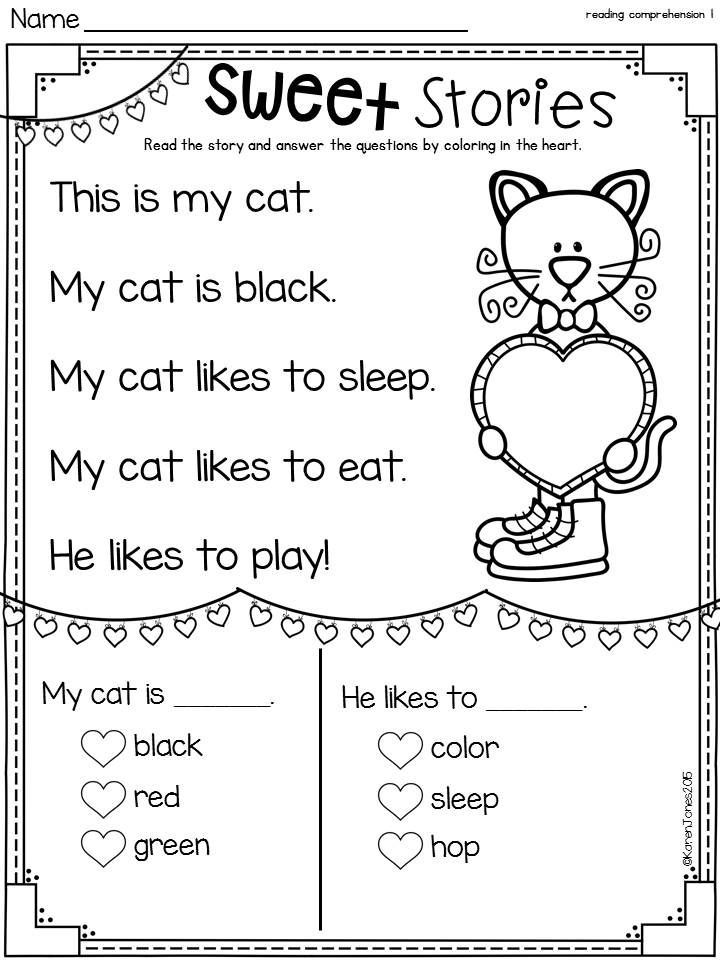
“I feel like I’m teaching four grades,” Miller said as she arranged the materials on her desk.
Several minutes later, seated at a table in the back of the room with five of her grade-level readers, Miller handed them each a phone, a small book and a green witch’s finger to help them point at the words in the book. “Today we’re going to talk about our reading tools,” Miller said, holding up a blue plastic phone. “These are called whisper phones. You whisper so you can hear yourself sound out the words,” she said. “Do these go on our heads?”
“No!” the students said, giggling.
“You know what these are for?” she said, holding up a rubber finger.
“Um, they’re for reading,” one student said. “’Cause I had them in kindergarten.”
“Very good. Are these for picking your nose?” Miller asked.
“No!” the students said, laughing.
She placed a book in front of each child and walked them through a series of exercises, including looking at the cover and predicting what the book would be about.
Then, they opened their books and began to read in a whisper. Miller turned from one side of the table to the other, listening as students read to themselves, pointing at each word with their green rubber fingers. She helped them sound out challenging words, like “away.” One by one, the students finished the book. A few read it several times in the minutes allotted.
Students practice reading using whisper phones during center time in their first grade classroom. Credit: Jackie Mader/ The Hechinger ReportMiller’s next group, all of whom were reading far below grade level, required a different activity. Rather than handing out a book, Miller pulled out a letter-matching game at the table, using materials she had from her days as a kindergarten teacher. She placed two small laminated cards on the table, one showing the letter D and a picture of a dog, and one with the letter B and a picture of a ball.
“We’re going to do your letters today,” Miller said to the group. “What letter is this?” she asked, pointing to the B.
“Ball!” one student responded.
“What letter?” Miller asked again. There was a pause.
“B!” another student responded.
“What sound does it make?”
“Buh,” a third student said.
The students ran through the activity, looking at pictures of items starting with B and D like a doll, ball, dog and dolphin, and sorting them into piles based on the starting letter.
A student reads a book during center time in Heather Miller’s classroom. Credit: Jackie Mader/ The Hechinger ReportExperts like Clearfield say finding new or different strategies to help students learn grade-level content after the last 18 months will be critical, even if that means pulling out activities typically used by lower grade levels, as Miller did with her lowest reading group.
It also may mean recruiting help from outside the classroom. Miller said Doss already had a strong team of interventionists to rely on, and several of her students receive extra reading help during the day.
Miller has also found it helpful to work with her fellow first grade teachers to solve a shared academic challenge. This fall, the first grade teachers all discovered that many of their students were behind in reading sight words. They began meeting regularly to share tips and strategies to combat this.
Despite the obvious need to catch kids up, Miller has been mindful of not coming on too strong with remediation efforts. “I don’t want to push them so hard where they get burned out,” she said on an October evening. “They’ve been through so much.”
Related: We know how to help young children cope with the trauma of the last year— but will we do it?
Mabry, of NWEA, said while catching students up is important, society needs to view the recovery process as a multiyear effort. “In previous years, when looking at unfinished learning and finding ways to get students to accelerated growth, we never expected that we would get students who need support to meet those accelerated goals in one year. We would never approach it that way,” Mabry said. “Now, we’re so frantic. I think we’re frantic because we feel it’s this larger population.”
We would never approach it that way,” Mabry said. “Now, we’re so frantic. I think we’re frantic because we feel it’s this larger population.”
It’s a daunting task, but experts say there is hope.
“Kids will catch up eventually,” said Clearfield from Whitman College. But to get there, society may need to re-evaluate expectations, she added. “If most children in our community are behind by, like, a year or two, then our expectations for what is typical, it’s going to have to match where they are,” Clearfield said. “Otherwise, we are going to be constantly frustrated … we’re going to have expectations that don’t match their skills or abilities.”
By mid-autumn, Miller was heartened by what she was seeing in her classroom. Students were becoming more confident and independent. Their writing was stronger. There were fewer conflicts.
There were fewer conflicts.
One morning, Miller stood by her desk as students effortlessly transitioned from one activity to the next during center time. They quietly buzzed around, cleaning up activities and putting their notebooks away in cubbies as she prepared to work with a new group of students at her desk.
“It kind of gives me hope that we’ll be OK,” she said. “Even after last year, we’ll be OK.”
This story about reading skills was produced by The Hechinger Report, a nonprofit, independent news organization focused on inequality and innovation in education. Sign up for Hechinger’s newsletter.
The Hechinger Report provides in-depth, fact-based, unbiased reporting on education that is free to all readers. But that doesn't mean it's free to produce. Our work keeps educators and the public informed about pressing issues at schools and on campuses throughout the country. We tell the whole story, even when the details are inconvenient. Help us keep doing that.
Help us keep doing that.
Join us today.
First Grade Reading Guide: Curriculum, Books & Strategies | Prodigy
It’s never too early to start building a lifelong love of reading — after all, stories are important no matter how old you are! Luckily, there are lots of ways you can help your little one develop their 1st grade reading skills as they dive into the wonderful world of books and stories.
As your child learns to read, they’re opening up a whole new world of information and developing skills that will help them learn for the rest of their life. Keep scrolling to find ways you can encourage and support them.
Foundations needed for 1st grade reading
First grade reading is important because it’s when students learn foundational skills they’ll use throughout the rest of their schooling. Many young readers benefit from focused reading strategies to help them build essential skills like vocabulary and reading comprehension.
First grade is also when kids start to discover a love of reading, independently or with an adult. They read simple stories on their own about subjects they’re interested in, or sit and listen as you read aloud with them.
To help encourage a love of reading, first graders should have key skills to help them as they move on to more complex stories and topics in later grades, including the ability to:
- Retell familiar stories
- Read aloud with grade-appropriate texts
- Find details that support an author’s main points
- Spot points of view and parts of a story while reading
- Identify sight words and high-frequency words in a text
- Sound out new words when they’re reading and spelling
- Read and write simple sentences about topics they’re interested in
- Know the names and sounds of letters, particularly vowels and consonant combinations
- Use strategies for decoding new words like context clues, vowel sounds and substitutions
- Use reading comprehension strategies like answering questions, retelling, identifying point of view and predicting
Tips for first graders' reading comprehension
While most of your child’s reading instruction happens at school, there are lots of ways you can encourage them to read at home and help build their reading comprehension skills.
Ask your child’s teacher to recommend any free or low-cost resources they use in the classroom and be persistent in practicing with these strategies:
Identify the main ideas
In fiction and nonfiction, every story has a main idea. As you read with your child, ask them to tell you what they think the most important part of the story is and why.
Learn more about what they’re reading and interested in when you help them summarize the plot, find supporting details and retell the story. A simple conversation about what they’re reading can open new doors for age-appropriate discussions and insights.
Understanding sequencing
It’s important for first graders to understand that stories have a beginning, middle and end. Sequencing helps them practice story structure so they can understand the plot and even start writing their own simple stories!
Your child can practice sequencing when they retell the story, sort flashcards with different story points on them or draw pictures of different points in the story.
Learn elements of the story
A story doesn’t just have a beginning, middle and end — it also has genre, characters and setting.
Picture books with illustrations can help students sort out different characters and settings or help them talk about the stories they just read. Encourage your child to sort fiction from nonfiction, and talk to them about the plot or the characters they liked best.
Discern reality vs. fantasy
Even in first grade, kids should be able to discern reality from fantasy. As they read, ask your child if the author is telling a real or made-up story. How can they tell?
Figuring out the difference between fiction and nonfiction is an important basis for media literacy, and will eventually help children tell the difference between facts and opinions.
Draw conclusions
After the story’s over, the work’s not done — your child still has to figure out the meaning of the text and draw conclusions from it.
Encourage your child to pick out the main idea and identify whether it’s fact or fiction.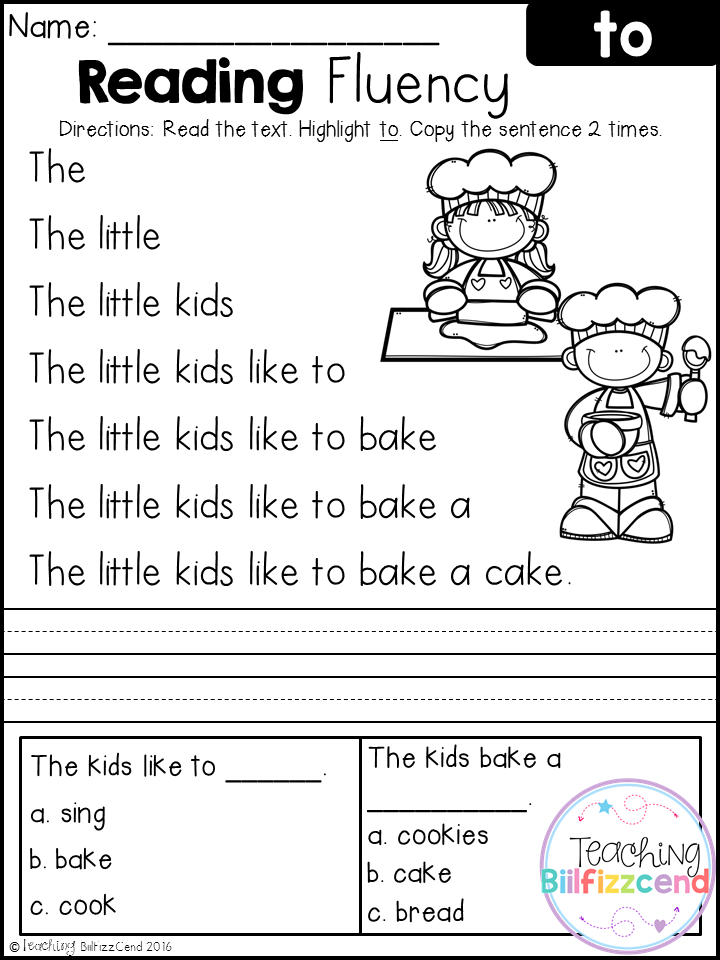 Then, you can work together to predict what happens after the story ends, or decide how the information they just learned relates to their own experiences.
Then, you can work together to predict what happens after the story ends, or decide how the information they just learned relates to their own experiences.
Online resources to help with first grade reading
Helping your child become an independent reader can feel like a daunting task. Luckily, there are lots of online resources to help!
Prodigy English
Prodigy English is a brand-new adventure designed to help kids build a love of English learning. As they play, they'll gather resources and answer curriculum-aligned reading and language questions.
Set in a unique world full of wishes and new characters, every correct answer gives your child more energy they can use to build items, earn coins and create a world just for them.
Create a free account today to get started!
Cost: In-game educational content free for students and teachers, optional Membership upgrade available
Sign up nowEpic
Epic is a digital reading platform with thousands of books for kids to choose from. Whether they’re reading in the classroom or at home, it can help encourage independent reading and give your child access to books on any topic they’d like.
Whether they’re reading in the classroom or at home, it can help encourage independent reading and give your child access to books on any topic they’d like.
Cost: Free
Newsela
To help your child develop key reading skills, introduce them to Newsela! This site has lots of engaging content sorted by topic. It’s a great supplemental resource to compliment what your child is learning at school.
Cost: Free content, but most is hidden by a paywall
Sora
From the makers of Overdrive, Sora is a free reading app that lets students borrow books from local libraries and learn to read independently. Use it to read with your child or encourage them to read on their own.
Cost: Free with library card
Starfall
Starfall is a site filled with resources that teach reading through play and positive reinforcement. Created as an alternative to non-educational entertainment, Starfall offers free content as well as membership options that can replace reading worksheets for kids.
Cost: Free, some content behind a paywall
Storynory
Storynory is a site full of free audiobooks for kids who prefer to listen rather than read. Available online or as an app, Storynory focuses on classic authors, fairy tales and educational stories in an engaging audio format.
Cost: Free
14 Great books for first graders
Every child has their own abilities and preferences when it comes to reading — but there’s a book for everyone!
Whether they’re reading first grade books or moving on to second and third grade novels, these picture books and chapter books encourage them to practice key skills such as phonics, consonant blends, vowels and general reading comprehension.
1.
There’s an Alligator Under My Bed by Mercer MayerThis funny book tells the story of a little boy afraid of the alligator under his bed and his elaborate rituals to make it go away. But is the alligator real?
But is the alligator real?
2.
Freckle Juice by Judy BlumeAndrew wants freckles like his best friend, and Sharon says her secret freckle juice will do the trick. Kids will have a hoot figuring out if the freckle juice is worth it.
3.
Ramona the Pest by Beverly ClearyRamona is starting kindergarten and she’s learning how to get along with other students. Laugh along as she makes mistakes and learns important lessons — and use it as a chance to learn about social-emotional skills with your little one.
4.
Hot, Hot, Hot by Neal LaytonOscar and Arabella, two Ice Age mammoths, love to play in the snow. When their world starts getting warmer, they have to get a little creative to stay cool.
5.
365 Penguins by Jean Luc FromentalA family finds a new penguin on their doorstep every day for a year. Read along as they figure out what’s going on and how to take care of all their new critters.
6.
Water Boy by David McPhailA special little boy overcomes his fear of water and finds amazing new powers.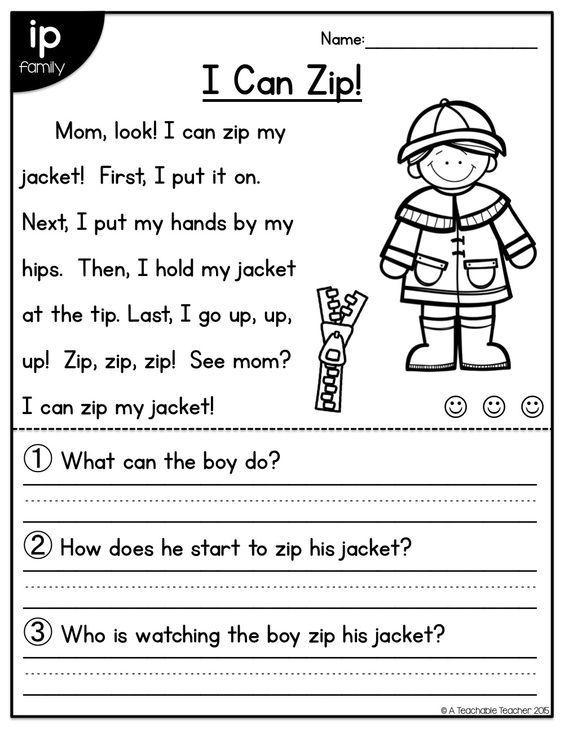 Read along as he discovers how to use them, and encourage your child to face their own fears.
Read along as he discovers how to use them, and encourage your child to face their own fears.
7.
Green Eggs and Ham by Dr. SeussIn this classic rhyming book, the narrator goes on zany adventures as he tries to avoid eating the dreaded green eggs and ham. Whether you’re reading with a fox or in a box, this book is a favorite for many children (and adults).
8.
Brown Bear, Brown Bear, What Do You See by Bill MartinThis board book is perfect for early readers just learning about words, shapes and colors. They’ll connect animals with colors and learn about all the wonderful things they can find in nature.
9.
Sheep in a Jeep by Nancy ShawThis crazy picture book lets readers follow along with a flock of sheep driving through the countryside — and all the trouble they get into along the way!
10.
When Will I Read by Miriam CohenLearning to read can be tricky at times. In this book, kids can follow along with the journey of a boy who’s learning to read and celebrate his (and their) success along the way.
11.
This Moose Belongs to Me by Oliver JeffersWilfred has a pet moose named Marcel. But what happens when, in the woods, someone else claims Marcels as their own? This beautiful picture book explores themes of friendship in a fun, child-friendly way.
12.
Where Are You From by Yamile Saied Méndez and illustrated by Jaime KimA little girl asks her abuelo to help her tell people where she’s from. In the process, she learns an important lesson about self-acceptance and identity.
13.
If You Give a Mouse a Cookie by Laura Joffe NumeroffA hungry mouse shows up on your doorstep, and you give him a cookie. But what kind of crazy shenanigans will happen next? Kids will have a blast following along with this unlikely journey.
14.
The Giving Tree by Shel SilversteinThis book tells the story of a boy and the tree that always provides for him, no matter how old he is. Children will learn an important lesson about relationships, giving and love from celebrated poet Shel Silverstien.
7 Fun 1st grade reading activities
Reading is great — but sometimes kids need a little variety. Use these activities to help first graders build positive, fun relationships with reading comprehension and build new skills!
1. Act out the story
Charades, pictionary, at-home theatrical productions — there are a lot of ways kids can tell you the story of what they’re reading, whether through play-based learning or more structured activities.
Retelling stories helps first graders grasp details like plot, characters and setting, and helps improve recall skills. Plus, it’s a lot of fun for you and for them!
2. Read poems together
Simple, popular poems can help kids delight in rhyming and give them new ways to think about the language they use everyday.
Some popular poems for kids include:
- “Wind on the Hill” by A.A. Mile
- “Life Doesn’t Frighten Me” by Maya Angelou
- Where the Sidewalk Ends, an anthology of children’s poems from Shel Silverstien
If you have a favorite poem, this is the perfect time to share it with your child.
3. Document words in a word journal or dictionary
When kids are reading, they’re constantly coming across new words like nouns, verbs and adjectives.
Give your child a space to write down words and their definitions, or even draw pictures of what they represent. They can reference it when they’re stuck, or look back at all they’ve learned.
4. Have an art session
After kids are done reading, encourage them to draw or paint the story using their favorite art supplies.
This helps them understand what happened in the story. It also gives them a way to express what they think their favorite characters or settings looked like using clues from the story.
5. Use story maps and graphic organizers
Story maps are a great way for kids to sort through their thoughts about reading and the facts they just learned.
Help your first grader fill in bubbles or charts that help them identify characters, setting, plot, genre and other story elements. They can also use it to make predictions about what happens next, or record new facts and words they learned.
They can also use it to make predictions about what happens next, or record new facts and words they learned.
6. Listen to an audiobook
If kids aren’t excited about reading or want to tackle more complex texts before they’re ready, audiobooks are a great alternative. Encourage them to listen as part of their evening wind-down routine or during quiet time.
Audiobooks are also a great way to encourage a love of stories if children are struggling with word recognition. Practice is important, but sometimes it’s nice to give kids a positive break.
7. Encourage special interests
Space, ballerinas, race cars — no matter what your child is interested in, there’s a book for it. Ask a librarian at your local library to help you find books your child will love, or host a book swap with friends to expose your child to new genres.
Encourage a lifelong love of reading starting in 1st grade
When it comes to exploring the wonderful world of books, first grade readers are just getting started!
Set aside dedicated reading time every day, but don’t overwhelm your child. It’s important to let them discover what they want to read and build a love of reading on their own. Use reading as a quiet activity or cozy up with a blanket and a good book for an afternoon of family time!
It’s important to let them discover what they want to read and build a love of reading on their own. Use reading as a quiet activity or cozy up with a blanket and a good book for an afternoon of family time!
Prodigy English is the brand-new adventure from Prodigy Education that helps kids build a love of reading. As they answer reading and language questions, they’ll gain energy they can use to create a world of their very own!
Create a free account to get started today.
Sign up nowwe learn to read by syllables, teach Russian alphabet for children
Home -forces and diploma
Reading and diploma
Course Learn the letter
View all
letter A
letter B
letter B 9000) letter G
The letter E
The letter Y
The letter Zh
The letter Z
View all
Letters and sounds
View all0003
Recognize the letter from the sound (1)
Recognize the sound in the word
Distinguish letters
Upside down letters
Guess the sound from the letter
First and last sound in the word (1)
First and last sound in the word (1)
)
Do you know the alphabet?
View all
Reading syllables and words
View all
Reading verbs (1)
Reading verbs (2)
Making words (1)
Making words (2)
Slogo game (1)
Slogo game (2)
Slogo game (3)
Which syllable is extra? (1)
Which syllable is missing? (2)
View all
Read phrases and sentences
View all
Decoder
Simple sentences (1)
Simple sentences (2)
Simple sentences (3)
View all
Develop a speech
View all
Decoder
Learning prepositions 9Ol000
We write competently
View all
Stressed and unstressed vowels
Combinations CHA-SCHA (1)
Combinations ZhI-SHI (1)
Grammatical blitz (2)
Vocabulary words (9)0003
Vowels after hard and soft consonants (2)
Vowels after hard and soft consonants (3)
Vowels after hard and soft consonants (4)
Write out the words from the text
View all
Doing analysis
View all
Letter and sound (1)
Letter and sound (2)
Letter and sound (3)
Letter and sound (4)
minor members of the sentence 3 class
Syllable division (1)
Syllable division (2)
Syllable division (3)
View all
Learning parts of speech
View all
Prepositions (2)
3
Parts of speech
Everything about the verb
Pronoun (1)
Words-objects answering the questions who? What?
Words-objects, words-actions, words-signs
Noun
Modifiable and invariable nouns (1)
View all
Secrets of the Russian language
View all
Alphabet. Alphabetical order
Alphabetical order
Antonyms
Interrogative sentences (1)
Dialogue and monologue
Lying and deaf consonants at the end of the word
Noun
Boach-Maid
Multiplying, borrowed words
View all
with literature
View all
Everything secret becomes clear
Reader's diary. A. Aleksin "In the land of eternal holidays"
Reader's diary. A. Volkov. Wizard of the Emerald City
Reader's diary. A. Gaidar "Chuk and Gek"
Reader's diary. A.P. Chekhov. "Kashtanka"
Reader's diary. A.S. Pushkin. "Ruslan and Lyudmila"
Reader's diary. A.S. Pushkin. The Tale of the Dead Princess...
Reader's diary. V. Gauf "Dwarf Nose" and "Little Muk"
Reader's diary. V. Kataev. Son of Regiment
View all
ABC online
View all
Tasks letter A
Tasks letter B
Tasks letter 9000 letter Z
Tasks letter Z
View all
Learn the alphabet
View all
Letter puzzles
Letters and sounds
Decoder
Do you know the alphabet?
Distinguishing letters
Distinguishing vowels and consonants
Distinguishing sounds in pictures (1)
Guess the sound from the letter
Learn the letter from the sound (1)
See all
First you need to understand that the child is ready for learning. This can be verified by the following indicators: - the child's speech is clear, without serious violations in pronunciation, the child does not "swallow" sounds during pronunciation; - there is the ability to see the text; there is an understanding that these are letters - not pictures, but symbols depicting sounds. It is believed that the ideal age for learning to read is 6 years old, but one must always understand that this age is determined individually. It is better to start learning to read by syllables in a playful way, getting acquainted with individual letters. It is better to do little by little, but regularly: 15 minutes daily will be enough. After getting acquainted with the letters, proceed to reading by syllables. Reading by syllables is a technique available to every adult, it does not require special training. But you can always choose lesser-known author's methods of teaching reading, carefully studying their features and reviews of other parents. Having folded the alphabet into syllables, you can proceed to compose simple words.
This can be verified by the following indicators: - the child's speech is clear, without serious violations in pronunciation, the child does not "swallow" sounds during pronunciation; - there is the ability to see the text; there is an understanding that these are letters - not pictures, but symbols depicting sounds. It is believed that the ideal age for learning to read is 6 years old, but one must always understand that this age is determined individually. It is better to start learning to read by syllables in a playful way, getting acquainted with individual letters. It is better to do little by little, but regularly: 15 minutes daily will be enough. After getting acquainted with the letters, proceed to reading by syllables. Reading by syllables is a technique available to every adult, it does not require special training. But you can always choose lesser-known author's methods of teaching reading, carefully studying their features and reviews of other parents. Having folded the alphabet into syllables, you can proceed to compose simple words.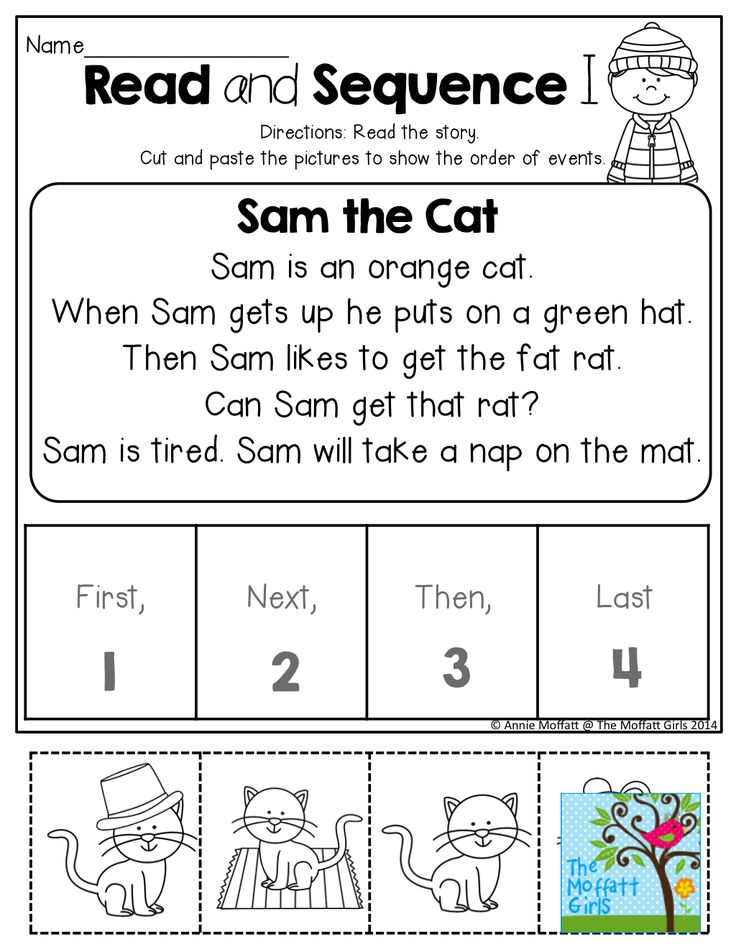 The main thing is not to force the process: when it is measured and regular, it is doomed to success!
The main thing is not to force the process: when it is measured and regular, it is doomed to success!
What is a syllable?
To successfully master the skill of reading, it is necessary to understand how to divide words into syllables. A syllable is one or more sounds uttered by one expiratory push of air. For a simple orientation, it can be taken as a rule that there are as many syllables in a word as there are vowels. Use our exercises, compiled by professional teachers, for a more effective acquaintance with this topic, so as not to confuse the concepts of "syllable division" and "word transfer".
How many words per minute should a first grader read?
The number of words read per minute, which can be used as a reference when assessing the quality of reading, is just one of the indicators. On average, the rate (or speed) of reading a first grade student is 15-25 words per minute. It is equally important to take into account qualitative indicators: how much the child understands the meaning of what is read, whether there is expressiveness when reading. To train the reading skill, it is important to be able to read not only aloud, but also silently, this is how awareness is born and further - the expressiveness of reading.
It is equally important to take into account qualitative indicators: how much the child understands the meaning of what is read, whether there is expressiveness when reading. To train the reading skill, it is important to be able to read not only aloud, but also silently, this is how awareness is born and further - the expressiveness of reading.
"The basics of literacy for preschool children are presented on our website with online exercises for learning letters, sounds, reading by syllables. Opportunities are presented for studying the alphabet, vowels and consonants and sounds, adding syllables, reading the first words and distinguishing sounds in words, taking into account the hobbies of a preschooler. Find matching words, play syllabic bingo, disenchant spelled words, and more! The lessons are equipped with bright and colorful pictures, illustrations understandable for the child, which will allow you to explore the magical world of letters and syllables in a playful way. "
"
Playful activities
Your child will have a fun and productive time.
Children are engaged with pleasure, are completely immersed in the learning process and achieve results. For children under 6 who have not yet learned to read, we voiced each task.
Cups and medals for children
Awards that motivate children to achieve success.
Each child has his own “hall of awards and achievements”. If the tasks are completed correctly, children receive cups, medals and nominal diplomas. The awards can be shared on social networks, and the diploma can be printed.
Personal training
Fully controlled development of the child.
We save all the successes of the child and show you what you should pay special attention to. Make up your own training programs so that the child develops harmoniously in all the right directions.
Get started with your child
today - it's free
Register and get 20 tasks for free. To remove restrictions and achieve great results in your studies - choose and pay for the tariff plan that suits you.
Register or to pick up the tariff
How to teach a child in grade 1 Read
Content
- Reading Technique
- Reasons for the slow reading speed
- Useful tips for parents
- Lessons
- Schult
going to first grade. After all, a reading student has much less difficulty with learning in general. You can find information on how to teach your child to read fluently in this article.
Teaching reading is the main task in grade 1Reading technique
At the age of 7, the child goes to school for the first time. In the elementary grades in reading lessons, special attention is paid to testing reading technique. The student must expressively and without errors read at least 30 words per minute, correctly stress, understand the text being read and retell it.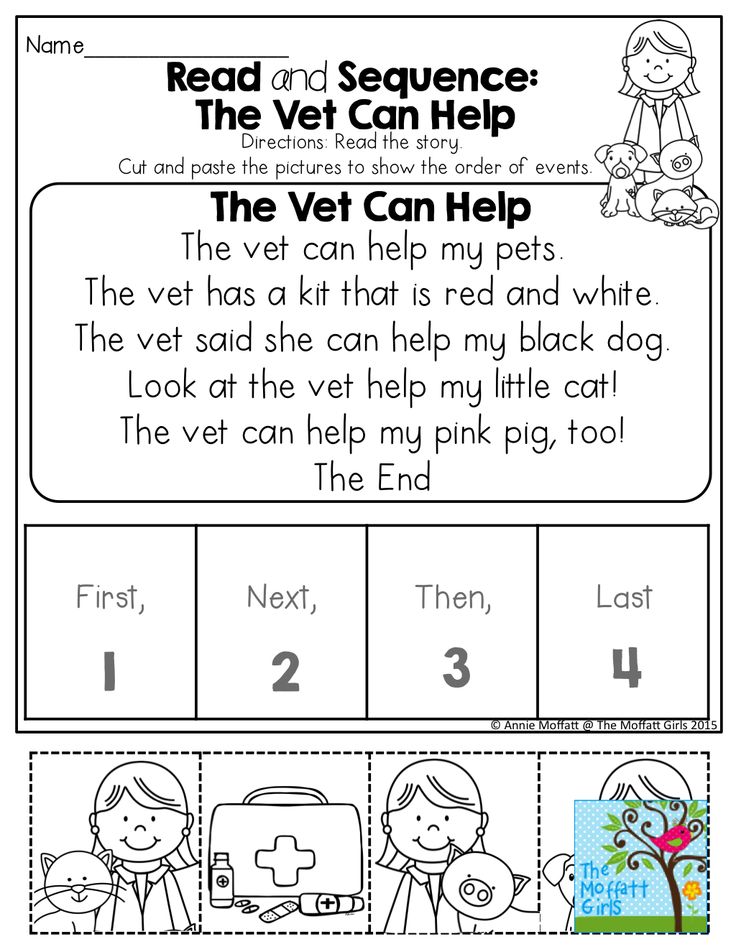
Causes of slow reading speed
- Weak working memory, when a child forgets what he read after 3-4 words and therefore cannot catch the essence of the sentence.
- Poor concentration and lack of perseverance.
- Little practice. Everything is simple here: read more - read better.
- Low volume operative field of view. You can expand it using Schulte tables (read below).
- Lack of interest in reading.
Reading together is the best way to instill loveMany parents are faced with the question of how to teach their child to love books - and do not find a clear answer. Take a look at your child. Who, no matter how mom and dad can determine what can actually awaken a craving for knowledge and literature in a child?
- Limited vocabulary. You need to deal with a child not when problems have already begun, but much earlier - from a very early age.
 Communicate with the baby on all sorts of topics, patiently answer all his questions, tell with enthusiasm, gradually adding more and more new words to the baby's vocabulary.
Communicate with the baby on all sorts of topics, patiently answer all his questions, tell with enthusiasm, gradually adding more and more new words to the baby's vocabulary. - The presence of regression, when small eyes constantly strive to return to the already read word.
- Underdevelopment of the articulatory apparatus, poor diction. The correct pronunciation of all sounds must be developed before you begin to work hard on speed reading.
- Dyslexia is a serious but completely correctable disorder. The child loses the ability to master reading skills, but the general ability to learn is preserved. In this case, it is best to contact qualified specialists - a defectologist and a speech therapist.
Helpful tips for parents
How to teach your child to read fluently in 1st grade? The solution to this problem depends on what exactly is the main reason for the low reading speed.
Is it necessary to teach a child to read before school If, after the first test of reading technique at school, it turns out that your child does not read fluently enough, be patient and persevering. And before moving on to specific exercises to improve your reading speed, here are a few tips:
And before moving on to specific exercises to improve your reading speed, here are a few tips:
- Tip #1. Classes should be regular. You will not get a decent result if you only take time to read with your child from time to time. Do not stop studying during the holidays, even after the end of the school year.
- Tip #2. It's important to have the right attitude. How to teach a child to love reading if the parents themselves treat this activity with disdain? Think of reading as something very exciting, then the child will be willing to study.
- Tip #3. Try to select literature with colorful pictures and large letters.
- Tip #4. Classes can be held not only at home. Take a book with you to the clinic, to visit. In the summer, go out to read in the park - you will get a double benefit.
- Tip #5. Be sure to consider the nature of the child. It is much more difficult to interest a fidget in a book. He will be more often distracted, but the child should not be scolded for this.
 Take longer breaks between classes, and also show imagination. You can teach your child to read in a playful way.
Take longer breaks between classes, and also show imagination. You can teach your child to read in a playful way. - Tip #6. Before starting a lesson, think it over carefully, study the material. Offer your child only those books whose content you have studied enough.
- Tip #7. Pay attention not only to the speed of reading, but also to whether the child understands the meaning of the text. Ask him to explain the material he read, prompt, push to the right thought.
- Tip #8. To teach your child to read with enthusiasm, with interest, approach the learning process creatively: act out scenes based on works, draw your favorite characters, come up with different options for the finale.
By following these tips, you can easily accustom your child to a book and improve his reading technique. Please select one or more of the activities below.
Activities
Reading to your favorite toy. During the lesson, sit next to the child his favorite doll, toy and offer to entertain with an interesting book. Also, the baby can read bedtime stories to a teddy bear or a hare. In the role of a teacher or parent, children feel more confident, more important, and therefore reading is easier.
During the lesson, sit next to the child his favorite doll, toy and offer to entertain with an interesting book. Also, the baby can read bedtime stories to a teddy bear or a hare. In the role of a teacher or parent, children feel more confident, more important, and therefore reading is easier.
Rationality. Long texts are difficult for young children, even if they are very exciting. Therefore, in order not to provoke fatigue from reading and not completely discourage desire, pick up a few short but interesting stories.
Intrigue before going to bed. Encourage your child to read a little before bed. Mark the place in the book to which he should read. Choose an intriguing moment in the plot. But to make your child sleep peacefully, do not offer him books about monsters, ghosts and witches.
You can not punish for not success in reading Tongue twisters. With the help of tongue twisters, the speech apparatus is trained. This is a very useful activity even for those children who have long been able to pronounce all the sounds.
Bookmark. This useful little thing is intended not only to mark the page on which you stopped reading. Speech therapists also advise using it to combat the so-called regression (when the child “looks back” at what has already been read). Once the word is read, just close it with a bookmark. Over time, this habit will disappear in the child, the reading speed will increase.
Reading "in between". You can read more than just books. During the walk, study the signs of shops, in the clinic, consider useful posters about diseases and their prevention.
Theater and cinema. Based on many literary works, magnificent films were shot and performances were staged. After the child reads the book, invite him to watch another performance in the theater and compare whether he imagined the main characters like that. You can also do the opposite: first go to a movie or a play, and then read a book together. So your child will not only learn to read, but also competently and beautifully express their thoughts.
Schulte tables
It has already been said above that such a table helps to expand the field of operational vision, to learn to read well. It looks like a square, which is lined with 25-30 cells of equal size. Numbers (or letters) are randomly entered into these cells. The task of the child is to find all the numbers in order as quickly as possible.
You have read an article on how to teach a child to read quickly. But remember: no matter what option you choose, the most important thing that parents should understand is that you can instill in children a love of books only by your own example. Read for yourself, discuss interesting books at a family dinner, visit the library with the whole family, and your child will not only learn to read fluently, but will also do it with pleasure.